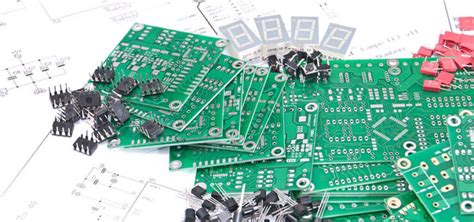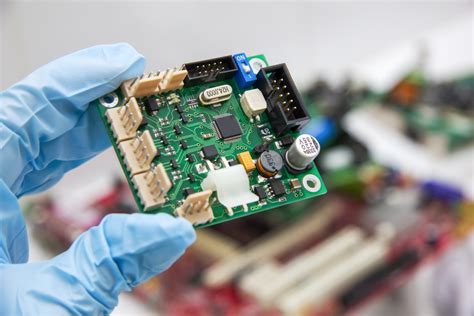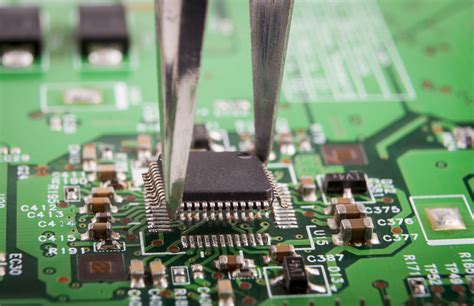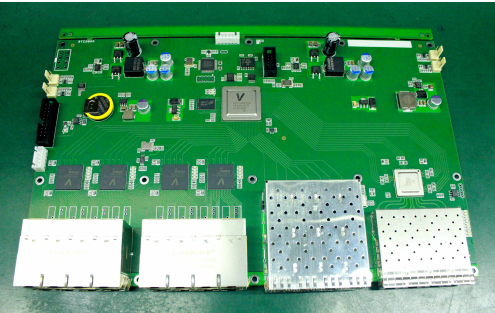Streamlined PCB Assembly Techniques for Modern Electronics

Key Takeaways
When it comes to pcb assembly, efficiency and quality are paramount in the ever-evolving landscape of modern electronics. The integration of innovative techniques and cutting-edge technologies has revolutionized pcba processes, allowing manufacturers to streamline their operations significantly. For instance, the adoption of automated systems not only speeds up assembly but also minimizes human error, ensuring a consistent level of quality across products.
Using methods such as surface mount technology (SMT) and advanced soldering techniques has proven to enhance the density of components on PCBs while reducing production time. Furthermore, implementing lean manufacturing principles can help identify and eliminate wasteful practices in the pcb assembly process, resulting in cost savings and improved workflow.
| Technique | Benefits | Considerations |
|---|---|---|
| Automation | Increases speed, reduces errors | Upfront costs, training required |
| Lean Manufacturing | Reduces waste, enhances efficiency | Cultural shift needed |
| SMT | Allows for compact designs | Requires precise setup |
"Incorporating emerging technologies in PCB assembly processes enables manufacturers to stay competitive and agile."
Strategically focusing on these elements can lead to not just enhanced productivity but also a robust quality control framework that accommodates the demands of modern electronic applications.

Introduction to PCB Assembly: Importance in Modern Electronics
In the rapidly evolving landscape of modern electronics, pcb assembly plays a crucial role in ensuring the functionality and reliability of various electronic devices. As the demand for more compact and efficient products increases, the techniques employed in pcba must adapt accordingly. Efficient pcb assembly processes streamline production, ultimately reducing costs and enhancing quality. Manufacturers are increasingly focusing on innovative techniques that not only improve the pace of assembly but also maintain high standards for quality control. The significance of a well-executed pcba cannot be understated; it serves as the backbone for electronic systems, connecting various components and ensuring they operate harmoniously. By exploring cutting-edge methods and implementing best practices, organizations can enhance their pcb assembly workflows, leading to improved product performance and longevity. Understanding the importance of these processes enables manufacturers to remain competitive in an ever-demanding market, ultimately driving technological advancement in modern electronics.

Innovative Techniques for Efficient PCB Assembly
In the rapidly evolving field of electronics, PCB assembly (PCBA) stands as a critical factor in determining the overall performance and reliability of electronic devices. To enhance efficiency in PCB assembly, manufacturers are increasingly adopting innovative techniques that streamline the process and improve quality. One prominent method is the incorporation of surface mount technology (SMT), which allows for more compact design layouts and facilitates automated assembly processes. This transition not only speeds up production times but also minimizes the potential for human error, boosting precision in component placements.
Another significant technique is pick-and-place automation, where robotic systems replace manual labor in positioning components during the PCBA process. This advancement not only increases speed but also enables greater consistency across batches, thus improving product quality. Additionally, advancing methods such as reflow soldering and wave soldering are being optimized through precise temperature control and timing mechanisms which ensure better adhesion and reduced defects in solder joints.
Implementing design for manufacturability (DFM) principles also plays a crucial role in optimizing the PCB assembly workflow. By evaluating designs early on for potential assembly challenges, manufacturers can proactively address issues that may arise during production, leading to higher efficiency and cost savings. Overall, adopting these innovative techniques contributes significantly to a more streamlined PCB assembly process, enhancing both productivity and quality while keeping up with the demands of modern electronics.
Best Practices for Quality Control in PCB Manufacturing
Effective PCB assembly is critical to ensuring the performance and reliability of electronic devices. Implementing robust quality control measures within the PCBA process is essential to minimize defects and enhance overall product quality. One of the best practices for maintaining high-quality standards involves thorough inspection at various stages of the assembly process. This can include automated optical inspection (AOI) to detect misaligned components or solder defects early on, thereby reducing costly rework down the line. Another important aspect is maintaining a controlled environment; temperature and humidity levels should be closely monitored to prevent material degradation that can affect soldering quality.
Utilizing detailed documentation and guidelines during the PCB assembly process is also vital. This includes clear work instructions, standard operating procedures, and comprehensive checklists that ensure all team members follow established protocols consistently. Regular training sessions for personnel involved in assembly can significantly improve their awareness and adherence to quality standards, leading to fewer mistakes during production.
Incorporating feedback loops from past projects into new iterations fosters a culture of continuous improvement. Lessons learned from previous assemblies can inform future practices that enhance productivity and mitigate risk. By embedding these quality control practices into the PCBA workflow, manufacturers can not only boost efficiency but also significantly elevate their product’s reliability in an increasingly competitive electronics market.

The Role of Automation in Streamlining PCB Assembly
In the era of modern electronics, the integration of automation in PCB assembly processes has significantly transformed production efficiency and quality. Automation introduces sophisticated machinery and robotics that enhance the speed and accuracy of PCBA operations. As the industry demands higher precision and faster turnaround times, automated systems reduce the likelihood of human errors while increasing throughput. Techniques such as pick-and-place machines for component placement, automated visual inspection systems, and selective soldering technologies exemplify how automation can refine PCB assembly. Furthermore, these automated solutions can be seamlessly integrated into existing production lines, leading to consistent quality control and minimized waste. By utilizing data-driven approaches through automation, manufacturers can track performance metrics in real-time, identifying bottlenecks and opportunities for continuous improvement. As a result, companies focusing on efficient PCB assembly practices are better positioned to meet the dynamic market demands while ensuring reliable end products that adhere to strict quality standards.
Emerging Technologies Shaping the Future of PCB Assembly
The world of PCB assembly is rapidly evolving, largely driven by emerging technologies that are transforming traditional practices. One of the most significant advancements is the integration of automated systems, which enhance efficiency and precision in the PCBA process. Techniques such as pick and place machines are now able to rapidly position components on PCBs with unparalleled accuracy, reducing both labor costs and assembly time. Moreover, 3D printing technology is making waves by enabling rapid prototyping and custom PCB designs, offering flexibility that traditional methods cannot match. Another promising trend is the adoption of machine learning algorithms in quality control processes; these systems can analyze a vast array of data to detect defects in real-time during the pcb assembly process. Furthermore, advancements in materials science, including flexible and printed electronics, are creating new possibilities for miniaturization and increased functionality in electronic devices. As these technologies continue to develop, they promise not only to streamline operations but also to enhance product reliability and performance. By embracing these innovations, manufacturers can position themselves at the forefront of the electronics industry, fundamentally reshaping how PCBA is approached.
Analyzing Common Challenges in PCB Assembly Processes
In the world of PCB assembly (PCBA), numerous challenges arise that can affect the overall quality and efficiency of manufacturing processes. One major challenge is component misalignment, which can lead to defects during soldering and ultimately result in functional failures of the finished product. This issue is often exacerbated by the increasing complexity of designs, with many components requiring precise placement. Additionally, thermal management plays a critical role; insufficient heat dissipation can cause overheating, leading to damage either during assembly or in the final application. Quality control also poses challenges, as inconsistency in material quality or process execution can impact reliability. Furthermore, the scalability of production processes becomes crucial as demand fluctuates; manufacturers must be prepared to adapt without compromising on quality or increasing costs excessively. Addressing these challenges often involves adopting automated solutions and advanced technologies that enhance precision and repeatability in PCB assembly (PCBA), thus contributing to higher yields and more robust electronic devices.
Case Studies: Successful Implementation of Advanced PCB Assembly Techniques
In the rapidly evolving field of electronics, implementing successful pcb assembly techniques can significantly enhance productivity and quality. Numerous companies have embraced innovative practices that streamline the pcba process, leading to remarkable improvements in manufacturing efficiency. For instance, a notable case study highlighted a mid-sized electronics firm that adopted automated soldering solutions, which dramatically reduced assembly time and minimized human error. By integrating robotics into their existing workflow, they achieved a pcba process that not only accelerated production but also ensured a higher level of precision in component placements. Another example is a leading tech giant that focused on utilizing advanced inspection systems as part of their pcb assembly strategy. The deployment of automated optical inspection (AOI) technology allowed for real-time monitoring and detection of defects, significantly boosting overall product reliability. These cases underscore the effectiveness of integrating state-of-the-art tools and methods in current pcb assembly practices, demonstrating how targeted innovations can lead to tangible benefits in both quality and efficiency. As more organizations recognize the value of such advanced techniques, they contribute to shaping a future where pcba not only meets but exceeds industry standards.

Conclusion: The Future Landscape of PCB Assembly in Electronics
As we look ahead, the landscape of PCB assembly is poised to evolve significantly, driven by advances in technology and the increasing demand for miniature, high-performance electronics. The future will likely see greater integration of automation and machine learning within the PCB assembly processes, allowing for enhanced precision and reduced production times. Innovative techniques such as 3D printing and additive manufacturing will complement traditional methods, enabling more complex designs to be produced more efficiently. Moreover, the use of data analytics will empower manufacturers to optimize their workflows and address common challenges associated with installation quality and yield rates. Ensuring that PCBA meets higher standards will require adherence to best practices that focus on both functionality and durability of electronic components. As we embrace these emerging technologies, the potential for reducing costs while improving quality becomes increasingly attainable. It is evident that the continuous pursuit of excellence in PCB assembly will define our capabilities in producing cutting-edge electronics that can meet future demands across various sectors.
Conclusion: The Future Landscape of PCB Assembly in Electronics
The landscape of PCB assembly is continuously evolving, driven by the relentless pursuit of improved efficiency and quality in electronics manufacturing. As the demand for more complex and compact electronic devices rises, so too does the need for advanced pcba techniques that can meet these challenges. Innovative solutions such as automated assembly processes and smart technologies are playing a pivotal role in enhancing productivity. Moreover, adopting best practices in quality control ensures that each PCB assembly project not only meets but exceeds industry standards. The emphasis on sustainability and reducing waste is also becoming a crucial consideration, leading to practices that minimize resource consumption without compromising performance. As businesses navigate these trends, it is essential to remain adaptable and proactive in integrating new methodologies into their workflows. The future of pcb assembly will be shaped by a blend of technological advancements and skilled craftsmanship, creating a synergy that fosters innovation in the electronics sector.

FAQs
What is PCB assembly and why is it important?
PCB assembly (or PCBA) is the process of assembling electronic components onto a printed circuit board. It is vital because it ensures the functionality of electronic devices, allowing them to perform their intended tasks efficiently.
What are the common methods used in PCB assembly?
The most common methods of PCB assembly include surface mount technology (SMT) and through-hole technology. Both methods have distinct advantages, with SMT being prevalent due to its ability to accommodate higher component densities.
How can automation improve PCB assembly processes?
Automation enhances PCB assembly efficiency by reducing human error, speeding up production times, and ensuring consistent quality in assembly procedures. Automated systems can also handle complex designs more effectively.
What role do emerging technologies play in PCB assembly?
Emerging technologies such as artificial intelligence (AI) and machine learning are shaping the future of PCBA by optimizing manufacturing processes and enabling smarter quality control measures. These advancements can lead to higher throughput and lower costs.
What are the common challenges faced in PCB assembly?
Common challenges in PCB assembly include managing component placement accuracy, soldering defects, and ensuring adherence to quality standards. Addressing these issues often requires a combination of best practices and advanced techniques.
For more information on efficient methods for assembling PCBs, please click here: Andwin PCB Assembly






